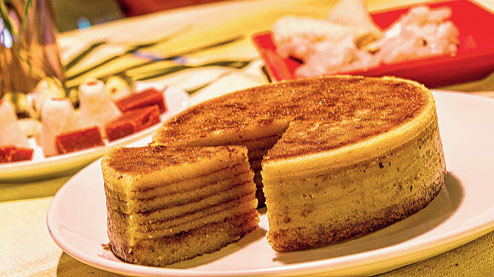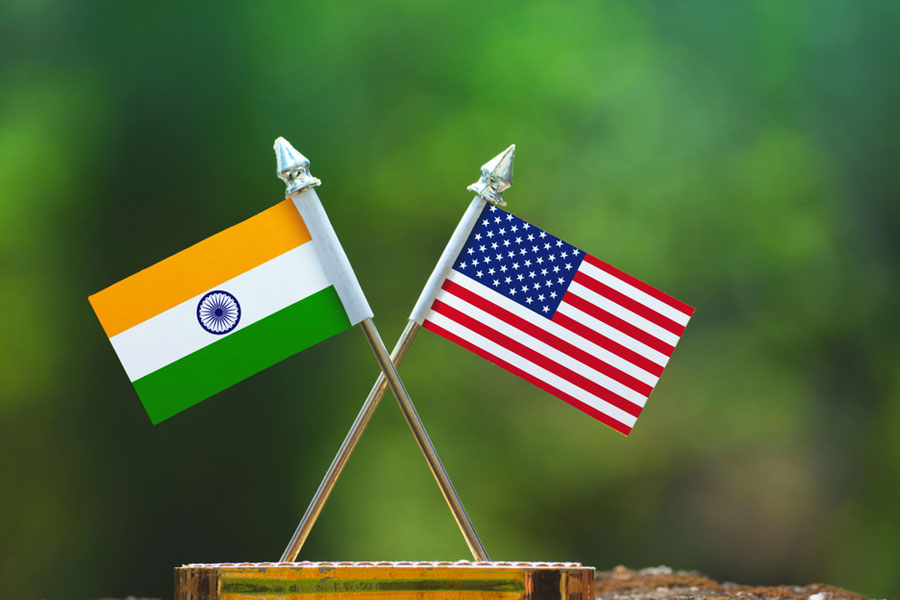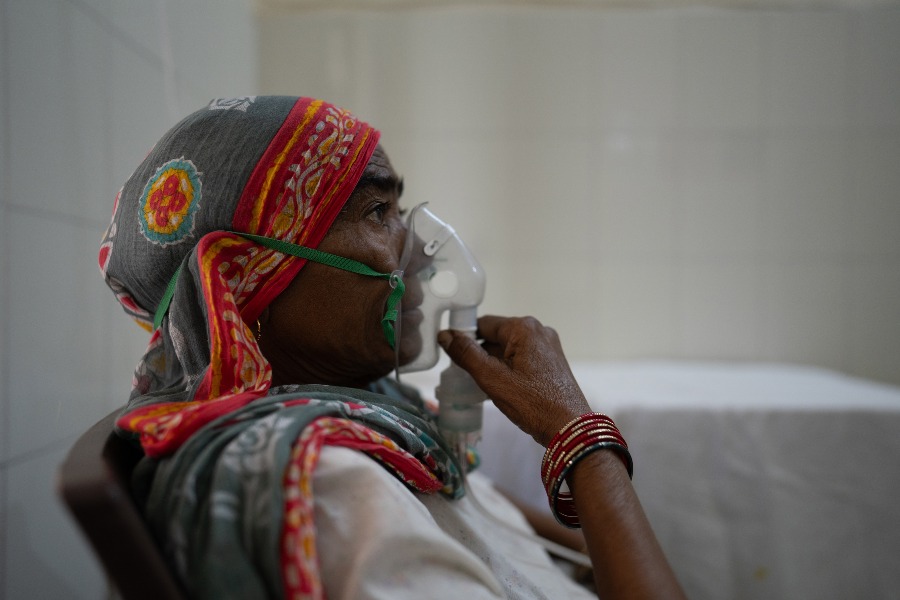

My rollicking love affair in Goa was foretold. “Do not miss a date with Bibique. I bet you’ll be taken for life,” a foodie friend of mine had stirred up the challenge that sleepless night before take-off. Not much into gastronomic adventures, I decided on a sneak sniff first.
An amorous crowd, drawn by a commanding aroma, had organised itself at the modest beach shack in Candolim. Bibique was holding them together with the promise of exquisite pleasure, caressing their senses and gently delivering them to fulfilment.
What a spell!
The next thing I knew I was on a secret rendezvous. As I savoured the handsome looks, the desire for further intimacy took over. A kiss of the supple warm texture on my lips and Bibique fondly melted in my mouth.
I was indeed taken.Bibique, also known as Bebinca, is a quintessential Goa layered cake, which is an integral part of the Christmas fare. It is rightly famous for the amount of work that goes into making one and the amazing taste that can result.
As the legend goes, Bebinca was first whipped up by a nun called Bebiana of Convento de Santa Monica in Old Goa. She made it with seven layers to symbolise the seven hills of Lisbon, Portugal, and offered it to a priest. But, he found it too small and thus the layers were increased.
Traditionally, a Bebinca is made of 16 layers, but layers can be added or subtracted according to one’s taste, appetite and, of course, patience.
I found a bizarrely captivating semblance between Bibique and Inception, the 2010 Christopher Nolan movie. A dream within a dream within a dream… each subconscious labyrinth built to exude genius and excite every brain cell. Yet Bibique offered more: a palpable delight that overwhelmed all my senses into a glorious submission to the vortex of taste, a wrapped-up-within-pleasure experience that even my favourite screen masterpiece couldn’t beat.
The comparison holds though.

Just like Nolan’s masterful execution of the multi-layered film, every layer of the Bebinca is baked nice and warm to flaunt the chef’s flair. The thick and dark foundation layer reminded me of how the solid groundwork in Inception sets the pace for a hair-raising corporate espionage using an experimental military technology to infiltrate the subconscious.
The shared dreaming between Dom Cobb (Leo DiCaprio) and Saito (Ken Watanabe) is a close parallel with how the culinary vision of the chef couples with the connoisseur’s senses (mine in this case) through the manna that is Bebinca.
However, the dream world of Inception is both terrific and terrifying: it can catch you unawares and kill you; Bibique only enthrals you with pleasure (unless you consider overindulgence and invite too many sugary devils into your bloodstream, a risk one should never forget; also not recommended for people with high cholesterol).
In run time, Bibique comfortably surpasses Inception. Against the film’s 148 minutes of layered dreaming, the delectable Goan dessert takes no less than 240 minutes to set its original seven layers of flour, eggs, sugar and coconut milk with ghee.
But then, anticipation is half the pleasure, they say.Irene Serpes, one of the traditional Bebinca-makers of Goa who is associated with Camelot Resort, Baga, underlines flawless measurement to make the cake to perfection, occasion or otherwise. “For any Goan dessert, the ratio of the base ingredient (flour in case of Bebinca) and sugar is of utmost importance. You can never get the right taste if you go wrong on measurement,” the 62-year-old culinarian said.
Mumbai-born Irene, who had whipped up her first Bebinca when she was in her thirties, rues that the indigenous recipe is fast losing out to global tourism demands with hotels falling back on fusion formulas to appeal to assorted guests.
"Nowadays, you will find Bebinca in many flavours, chocolate and honey being the most common. It is sad to see such desecration of Goan heritage.”
While Bebinca is one sexy dish to die for if you don’t mind the gazillion calories, have a sweet tooth and a dentist on call, there are a host of other equally tempting desserts one cannot afford to miss in this gourmet paradise.
One among equals — and the best supporting actor for my kitchen Oscars — is Perade or guava cheese, all dark red and sinful.
The classic festive sweet with a tang of lime serves two purposes: it can be eaten for breakfast as jam on toast when half-cooked or as mithai when fully done. If you are fond of pairing flavours like me, also try diced Perade filler between cubes of plain salted cheese.
Like Bebinca, Perade too employs run of the mill ingredients and yet commands a lot of hard work. If one isn’t used to cooking, hands may hurt by the time the delectable guava cheese is lip-smacking scarlet and ready to slice and dice.
Irene has a short cut to success though. “Stirring the blended and strained ripe guava pulp, sugar and lemon juice till the colour goes from light yellow to deep red can be agonising; even off-putting sometimes. So, I guiltily smuggle into the pot a few drops of raspberry essence, which then works wonders with the colour but doesn’t ruin the taste a bit.”
Doce de Grao, the next in line of my desired Goan sweets, tests the maker’s love and patience just like any song-full Bollywood mush would. Preparation alone takes more than three hours and then there is the customary intensive stirring. But, hard on the outside and creamy on the inside, the coconut-laced chana dal cubes with a hint of cardamom taste fantastic nonetheless.
Last, but never the least for people with a gargantuan appetite like me, is another Goan preparation of caramelised grated coconut garnished with almond slivers, raisins and cherries, which goes by the good name of Letria.
The pride of buffet tables in Portugal, where it is made of vermicelli instead of coconut, this sweet dish is on the easier side in its desi variation, albeit requires some precision. “You need wedding coconuts (ones with milky soft cores) for Letria. You grate them and cook them in boiling syrup until whole of the syrup is absorbed. Egg yolk threads are used for flavour. It is a lot easier than most other Goan Christmas desserts,” said Irene.
Those among you who have the luxury of time and patience in quintals can definitely give the next festive fare a Portuguese twist, and become the neighbourhood’s new culinary queen (or king).
Others (like me) who face the perennial crunch of time (for kitchen indulgence) and patience (for almost everything) can grab your fill of all these sweets in their indigenous avatar from the Mapusa market when you visit Goa.
Either way you will spread the love.
BEBINCA

For seven layers only
Ingredients
- Plain flour: 250gm
- Sugar (ground): 1kg (!!!)
- Egg (yolk only): 20 (!!!)
- Coconut milk: 700ml (four coconuts)
- Ghee: 200gm
- Nutmeg (powder): half teaspoon
Method
- Whisk sugar and egg in a bowl till creamy
- Pour half of the coconut milk and mix well
- Add flour, a little at a time and alternately with the remaining coconut milk to ensure that no lumps form
- Sprinkle nutmeg
- Keep aside for 30 minutes
- Pre-heat your grill
- Put a tablespoonful of ghee in a round baking dish at least 6-inches deep. Put this pan under the grill till the ghee melts
- Take it out from under the grill and pour some of the prepared batter into it to form a thick layer, around one-fourth of an inch
- Put it back under the grill and cook till the top is golden. Monitor frequently
- Remove from under the grill and immediately add another tablespoonful of ghee on the previous layer. It will melt
- Add another layer of batter of the same thickness as the previous one. Cook under the grill till golden
- Keep repeating the layering process till all the batter is used up
- The last layer must be pure ghee for the sheen
- Serve warm solo or with vanilla ice cream
LETRIA


Ingredients
- Wedding coconuts (grated): 2
- Egg (yolk only)
- Sugar: 500gm
- Butter: 1tbsp
- Almond (slivers): 100gm
- Vanilla essence: 1tsp
- Cherry (slices): 50gm
Method
- Beat the yolks well
- Boil the sugar in a cup of water to make thick syrup
- Lower the flame and pass the beaten yolk through a sieve in a thread-like pattern on the syrup
- Remove immediately with the help of two forks and spread on a plate
- This is the 'Letria'
- In the same syrup, add the grated coconut and butter
- Add vanilla essence
- Cook till the mixture is quite dry
- Remove from the flame and spread on a wide serving dish
- When cool, garnish with almond and cherries and serve












